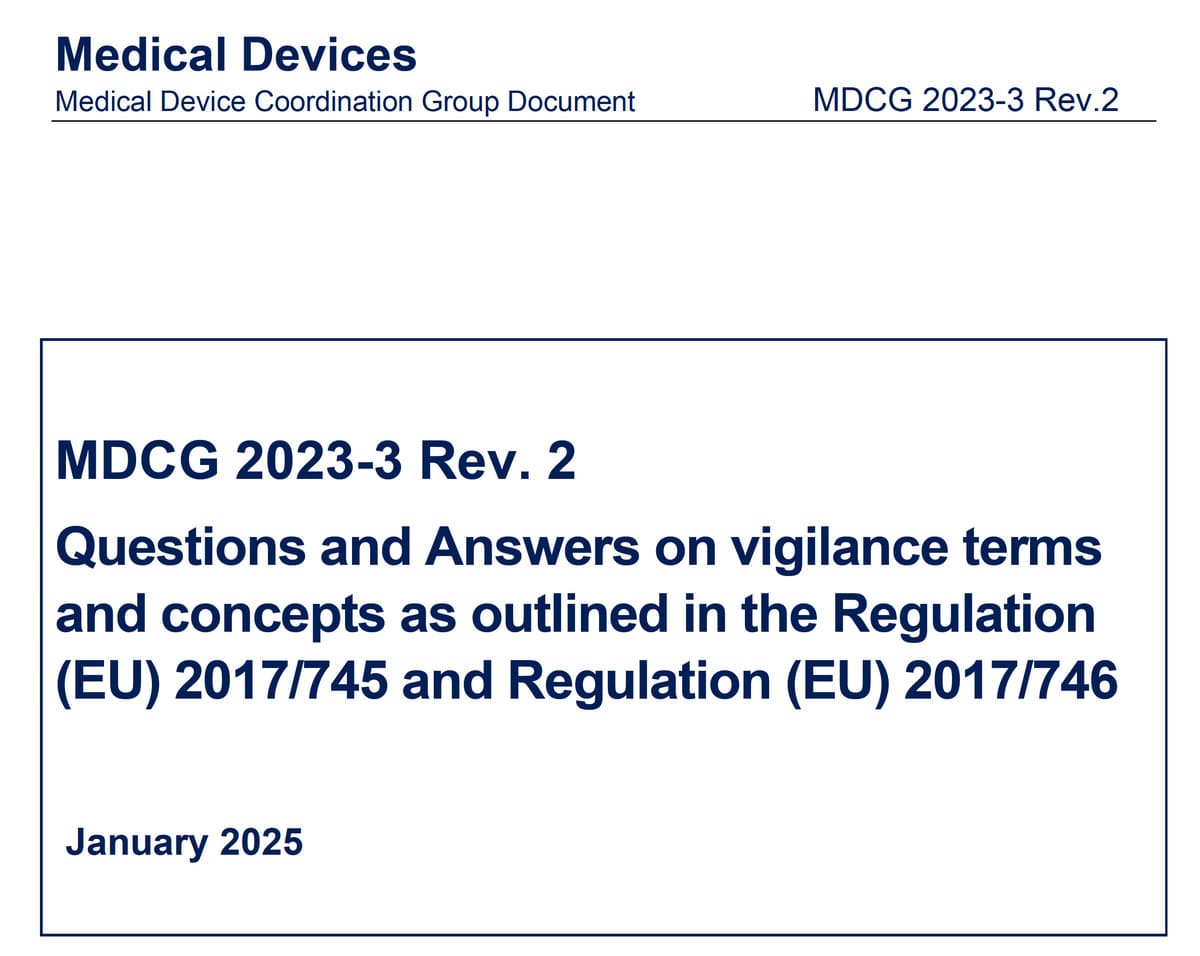
MDCG 2023-3 Rev.2: What Changes in Vigilance for MDs and IVDs in 2025?
Medical devices regulation
On January 7, 2025, the MDCG 2023-3 guide was updated to Revision 2, introducing significant adjustments to the vigilance management of medical devices (MDs) and in vitro diagnostic devices (IVDs). These targeted changes aim to clarify key definitions, streamline reporting processes through Eudamed, and provide enhanced technical references.
This article analyzes these updates and their implications for manufacturers, building on our previous analysis of Revision 1 to provide you with a comprehensive overview.
Key Points of the MDCG 2023-3 Rev.2 Guide
The MDCG 2023-3 Rev.2 guide, updated in January 2025, provides significant clarifications and adjustments to help medical device (MD) and in vitro diagnostic device (IVD) manufacturers comply with MDR (2017/745) and IVDR (2017/746) regulations. Here are the main points addressed in this new version:
- Improved Definitions of “Incident” and “Serious Incident”: The definitions have been reviewed and enriched for better differentiation between the two terms, with a detailed table remaining a central feature of the guide.
- Clarified Role of Eudamed in Vigilance: The guide explains how the Eudamed database can be used for reporting incidents and serious incidents, contributing to harmonized processes across the European Union.
- Enhanced Technical References in Footnote 34: This footnote introduces additional technical elements, guiding manufacturers toward recommended standards and practices for vigilance management.
For our analysis of Revision 1, click here: Analysis of the MDCG 2023-3 Rev.1 Guide.
Major Changes in the MDCG 2023-3 Rev.2 Guide Compared to the Previous Version
Revision 2 introduces targeted adjustments compared to the previous version, published in November 2024. Here are the main changes:
- Revised Definitions for Greater Clarity: Question 1 has been updated with minor modifications to the definitions table, enhancing the readability and interpretation of key terms.
- Harmonization with Eudamed: Question 21 has been updated to include details on using this platform as a centralized tool for vigilance reporting.
- Precise References Added in Footnote 34: These new technical references complement previous information, providing useful guidance for regulatory compliance and data management.
These changes reflect a clear intent to improve clarity and simplify processes for industry stakeholders.
Points of Vigilance for MD and IVD Manufacturers
With this Revision 2, manufacturers must focus on several key elements to ensure compliance and improve vigilance management:
- Adhering to Reporting Timelines via Eudamed: Clarifications on using Eudamed for reporting serious incidents provide a centralized pathway to meet regulatory deadlines, including 2 days for public health threats or 10–15 days for serious health deterioration.
- Strengthened Safety Criteria for IVDs: Incidents related to erroneous results must be exhaustively documented. The new references introduced in Footnote 34 help standardize this documentation and ensure compliance with IVDR requirements.
- Harmonization of FSCAs through Eudamed: Clarifications on Eudamed’s role in communicating corrective actions simplify coordination with competent authorities and ensure a consistent strategy across Europe.
- Documentation of Non-Reportable Incidents: Manufacturers must continue to meticulously document non-reportable incidents in their quality management system, following the best practices mentioned in Footnote 34.
- Clarification of Incident Definitions and Management of Use Errors: Revised definitions provide better tools for identifying and managing use errors, including those related to ergonomic features. Particular attention must be given to potentially serious incidents to avoid misclassification.
Conclusion on the MDCG 2023-3 Rev.2 Guide
MDCG 2023-3 Rev.2 demonstrates that the European Union continues to refine its vigilance guidelines to better address the safety of medical devices and IVDs. For manufacturers, this update represents an opportunity to streamline reporting processes, improve documentation, and strengthen compliance with regulatory requirements.
By integrating these changes into their practices, manufacturers can not only ensure compliance but also build greater trust with authorities and users of their devices. Proactive and structured vigilance is now essential to remain competitive in 2025 and beyond.
CSDmed: Your Partner in the MDR 2017/745 Transition
The European MDR 2017/745 imposes new requirements for medical devices, with stricter demands on documentation, clinical evaluations, PMS procedures, and many other aspects of regulatory compliance.
At CSDmed, we help our clients—start-ups, manufacturers, importers, and distributors—navigate these challenges during their transition to MDR compliance. Our team of specialized experts and consultants supports you throughout the process, from achieving compliance to final certification.
🔗 Contact us to discover how our team can help you succeed in your MDR transition.